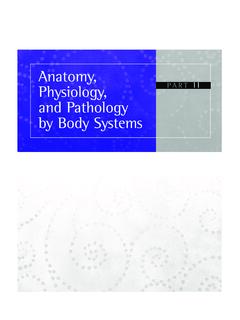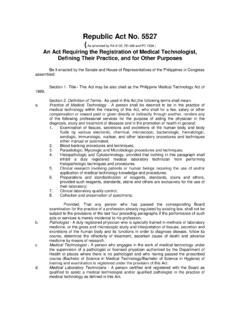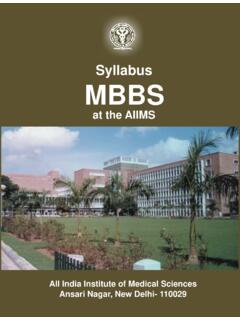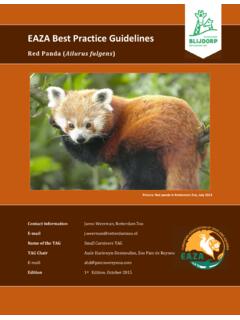Transcription of Cardiovascular Pathology - Lecturio
1 Cardiovascular Pathology The Perfect Preparation for USMLE Step 1 You cannot separate passion from Pathology any more than you can separate a person s spirit from his body.(Richard Selzer)2021 is one of the most-tested subjects on the USMLE Step 1 exam. At the heart of the Pathology questions on the USMLE exam is Cardiovascular Pathology . The challenge of Cardiovascular Pathology is that it requires students to be able to not only recall memorized facts about Cardiovascular Pathology , but also to thoroughly un-derstand the intricate interplay between Cardiovascular physiology and Pathology . Understanding Cardiovascular Pathology will not only allow you to do well on the USMLE Step 1 exam, but it will also serve as the foundation of your future patient care.
2 This ..will provide you with everything you need to know about Cardiovascular Pathology for your USMLE Step 1 exam..will equip you with knowledge about the most important diseases related to the Cardiovascular system, as well as build bridges to the related medical sciences, thus providing you with the deepest understanding of all Cardiovascular Pathology topics..is specifically for students who already have a strong foundation in the basic sciences, such as anatomy, physiology , biochemistry, microbiology & immunology, and pharmacology. Elements of this eBookLive as if you were to die tomorrow. Learn as if you were to live forever.
3 (Mahatma Gandhi) A number of descriptive pictures, mnemonics, and overviews, but also a reduction to the essentials, will help you to get the best out of your learning you not only read the section but also understand it? Our review questions ensure your learning success. Whether you have not yet understood something perfectly, or whether you want to deepen your knowledge, in our videos, our lecturers explain everything to you once again. EXPLORE THIS TOPIC WITH OUR VIDEOS! Cardiovascular Pathology eBookHigh-yield-information will help you to focus on the most important :Murmurs of grade III and above are usually pathological.
4 (..)LEARN AND REVIEW CONCEPTS FASTER, EASIER Video LecturesShort, concise and easy-to-follow video lecturesAll key concepts covered in depth, emphasizing high- yield informationIntegrated quiz questions for active learningMEMORIZE KEY INFORMATION BETTER, SMARTER Spaced Repetition Quiz APPLY CONCEPTS WITH CONFIDENCE Question BankCREATE YOUR FREE ACCOUNTL ecturio Makes High Scores Achievable for All Students! Lecturio s Question Bank is based on the latest NBME standardsAn exam-simulating interface helps you become familiar with actual test situationsTutor mode supports you with detailed explanations, linked video lectures, and First Aid referencesImprove your ability to recall key information even under pressureAn adaptive algorithm tells you exactly when and what you need to repeatStay on track with regular notifications for questions dueMost Important Facts about HypertensionMost Important Facts about Heart SoundsPractical Guide to Cardiovascular ExaminationMost Important Facts about Ischemic Heart DiseasesStable AnginaVasospastic AnginaAcute Coronary Syndrome (ACS)Unstable AnginaMyocardial Infarction NSTEMI vs.
5 STEMIM itral Valve Prolapse (Barlow Syndrome)Mitral Stenosis (Mitral Valve Stenosis) Mitral Insufficiency (Mitral Regurgitation)Aortic Stenosis (Aortic Valve Stenosis) Aortic Insufficiency (Aortic Regurgitation) Most Important Facts about AtherosclerosisDyslipidemia/Hyperlipidem ia 7 1819 2339 4748 5153 5960 6465 7172 8182 8384 9294 9899 105106 112113 119120 12625 37 Table of ContentsChapter 1: Heart SoundsChapter 2: HypertensionIntroductionChapter 4: Ischemic Heart DiseaseChapter 3: AtherosclerosisChapter 5: Valvular Heart Disease128 139140 145 Table of ContentsChapter 7: Pericardial DiseaseChapter 8: ArrhythmiaChapter 9: Common Vascular DisordersAcute Pericarditis Constrictive Pericarditis Pericardial Effusion And Cardiac Tamponade Anatomy of the Electrical System of the Heart Most Important Facts about ArrhythmiaAtrial Fibrillation (AFib)BradyarrhythmiasAtrial FlutterMultifocal Atrial Tachycardia (MAT)Wolff-Parkinson-White (WPW) SyndromeVentricular Tachycardia (VT)Chapter 6: Congestive Heart FailureCongestive Heart FailureCardiogenic Pulmonary Edema Aortic Dissection (AD)Peripheral Artery Disease (PAD)147 153154 160161 169224 235236 244171 173174 178179 188189 195196 201202 206207 214215 222 References & Image AcknowledgementsGIVE US YOUR FEEDBACK!
6 Help us improve your learning experience! Cardiovascular diseases are conditions that affect different structures of the heart, ranging from vascular disorders such as coronary and peripheral arterial diseases, to cardiac disorders based on the affected anatomical structure of the heart. Ischemic heart disease (IHD) is the leading cause of death and disability worldwide and can be prevented by lifestyle changes such as quitting smoking, exercising, and following a healthy diet, and correcting its risk factors (such as diabetes, dyslipidemia, and obesity) in their early stages. IHD can range from asymptomatic coronary heart disease through to stable/unstable angina and myocardial infarction, with several consequences, such as chronic heart failure, arrhythmias, and even death.
7 Valvular heart diseases are also common in practice, taking the forms of stenosis, insufficiency, or a combination of the two. These structural changes result from either underlying congenital conditions or acquired causes, including infections, ischemic heart disease, or degenerative processes. The type of valvular disease is determined by the levels of ongoing cardiac stress and the severity of presenting symptoms. In this eBook, we will describe the different Cardiovascular disorders in detail, providing a high-quality review for your USMLE Chapter 1: Heart Sounds EXPLORE THIS TOPIC WITH OUR VIDEOS! General IntroductionChapter 1: Heart SoundsChapter 1: Heart Sounds9 Types, Origins and Timing of Heart SoundsOn auscultation, 2 heart sounds are heard from a normal heart, which are described as the first and second heart sounds.
8 Additional heart sounds may be present, namely the third and fourth heart sounds. Further sounds such as murmurs may also be heard upon auscultation of the heart. First and second heart soundsThe closure of the heart valves produces vibrations that are picked up as the 2 heart first heart sound, S1, corresponds with the closure of the atrioventricular valves the tricuspid and mitral valves of the heart. S1 represents the start of ventricular systole. The closure of the mitral valves pre-cedes the closure of the tricuspid valves; however, the time between them is minimal so that S1 is usually heard as a single sound. S1 is best heard at the apex of the second heart sound, S2, corresponds with the closure of the semilunar valves the aortic and pul-monary valves of the heart.
9 S2 signifies the end of ventricular systole and the beginning of diastole. Compared to the first heart sound, S2 is shorter, softer, and slightly higher in pitch. A reduced or absent S2 indicates Pathology due to an abnormal aortic or pulmonic 1-01: Heart Sounds and the cardiac cycle040206080100120 Heart soundsPressure (mm Hg)Chapter 1: Heart Sounds10 The aortic valves shut before the pulmonary valves. This is due to lower pressures in the pulmonary circulation which allows blood to continue flowing into the pulmonary artery after systole ends in the left ventricle. In 70 % of normal adults, this difference can be heard as the splitting of the second heart sound.
10 The pulmonary component of S2 is referred to as P2; the aortic component is called A2. Splitting is best heard in the pulmonary area (second left intercostal space) and at the left sternal of the second heart sound 1) Physiological splitting of S2: Inspiration delays closure of the pulmonary valves by about 30 60 milliseconds due to increased venous return and decreased pulmonary vascular resistance. This is called the physiological split-ting of S2. 2) Abnormal splitting of S2: Wide splitting of S2: An exaggerated (persistent) physiological split that is more pronounced during inspiration. Fixed splitting of S2: Fixed delay of P2 closure due to increased right-sided volume (ASD or advanced RV failure).





